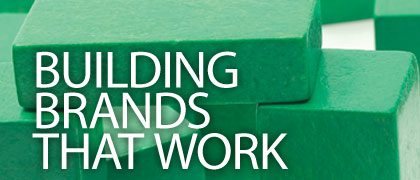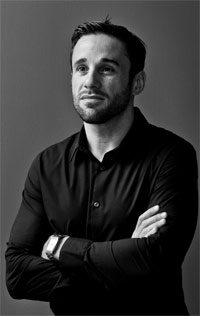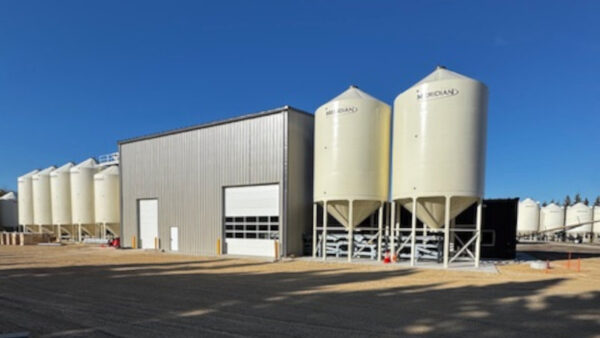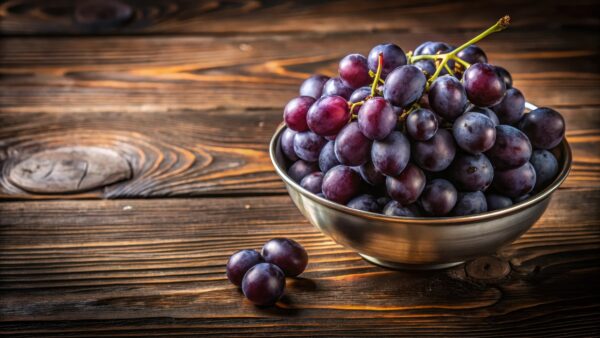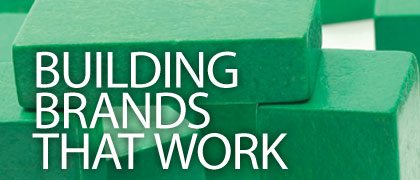
The seed-selling marketplace is already bursting with product messaging. What does it take to make your brand stand out?
Spend five minutes on a crowded tradeshow floor, surrounded by countless logos and product messages splashed across banners, stands, posters and brochures, and you’ll likely feel more than a little dizzy. It’s clear that companies with intelligent, thoughtful branding strategies are companies with good business sense. But in today’s competitive seed-selling marketplace, getting your brand noticed can be a challenge.
The notion of branding has its roots in agriculture, specifically livestock — a farmer’s brand distinguished his cattle from every other farmer’s. Today, branding carries similar connotations: your company’s brand includes everything that distinguishes it from every other company and creates its public identity — its name, logo, design and messaging.
According to David Lazarenko, executive vice-president of account services for Think Shift, a Winnipeg-based advertising agency that specializes in agriculture, seed companies looking to build successful brands must first ask themselves why they matter to their audiences, and what makes them different from other companies.
“There are a lot of companies focused on the ‘what’ and ‘how’ — what we produce, and how we do it. But those two aren’t necessarily very different,” says Lazarenko. “Any seed company should be able to stake the same claim that they are investing in research and development and producing high-quality seed. It’s the ‘why’ that matters — ‘We believe in supporting the farmer, or continuing to grow opportunities in rural areas.’ The ‘why’ is generally the brand differentiator.”
Lazarenko should know. He’s worked with companies across the agriculture spectrum, including seed companies like Canterra Seeds and Cargill’s Specialty Seeds and Oils, crop protection companies, not-for-profit agriculture companies, manufacturing companies and grower groups such as the Canola Council of Canada.
|
“If you have eight people saying their product is the best, there can only be one ‘best’ performing variety. Who do you believe? There needs to be something in addition to the performance message.” |
He says two major challenges currently face seed companies: the difficulty of creating a new brand with a meaningful message — the ‘why,’ in other words; and the fact that growers are also keenly interested in the ‘how’ and ‘what’ — the research behind the products that will spell success or failure for their crops.
But messaging based purely on performance — whether the seeds will perform as promised, and deliver a strong return on the grower’s investment — is not enough, according to Lazarenko. “If the seed doesn’t perform, there will be dollars lost, and that’s enormous. It’s an enormous investment for any farmer and an enormous relationship for the retailer who recommended the product,” he says.
For years, however, competition has been increasing in the seed industry, creating what Lazarenko calls a “dogfight” between companies, each claiming their product offers the best return on investment. “If you have eight people saying their product is the best, there can only be one ‘best’ performing variety. Who do you believe? There needs to be something in addition to the performance message.”
Integrated Branding
An interesting challenge facing many companies is that they must create new brands for each new product in widening product portfolios, each of which supports the ‘master brand.’ For mega-companies such as Bayer CropScience, which adds new products to each of its portfolios every year, brands are often created in the countries where products will be registered, but all brands must be integrated into the company’s global brand.
Derrick Rozdeba, a marketing communications co-ordinator for Bayer CropScience based in Calgary, Alta., says that the company owns hundreds of brands globally, and maintains more than 60 brands in Canada, with 20 of those brands requiring a commitment of advertising investment.
With so many brands to manage, and new products coming down the pipeline regularly, one of the particular challenges that Rozdeba and his team face is the difficulty of finding strong product names for new products. “The most recognized names are already trademarked,” he says. “Most people will gravitate toward words that they know, and descriptive words, and those are really difficult to trademark because they’re common words. Then there are conflicts over trademarks that have similarities.”
After a name has been selected, it must be tested in the region where the product will be released to ensure the name carries no negative connotations. New names must also be tested to make sure they translate well if the product is released in other countries.
Once a trademark has been registered for a product name, Bayer outsources other pieces of the branding process to legal, research and design firms. Brand development work is often done concurrently with the product’s testing and registration process, to ensure the brand is ready when the product has been given a green light.
“It’s a process, and ideally you need a couple of years,” says Rozdeba.
As to the need for integrating individual brands with Bayer’s master brand, Rozdeba believes the strength of product brands must come from the company’s overall marketing strategy. “[A consumer’s] trust in innovation and quality generally resides with the master brand, and each product brand has to support that,” he says. “It wouldn’t make sense for us to get into a product that doesn’t fit with our portfolio.”
“[A consumer’s] trust in innovation and quality generally resides with the master brand, and each product brand has to support that. It wouldn’t make sense for us to get into a product that doesn’t fit with our portfolio.” — Derrick Rozdeba
Target Audiences
Ultimately, companies must keep their target audiences in mind when creating any brand. For seed companies, the target audience is seed retailers and growers, and brands must be built on a good understanding of both.
Bayer’s success in Canada is largely based on strong relationships built over time between growers and representatives of the company.
Bayer has developed an “archetype” of its target audience, which offers lists of facts based on research, about most of the growers they work to reach through product messaging. Growers, according to this archetype, are savvy businesspeople with an eye to increasing investment who purchase insurance and tend to be do-it-yourselfers with a high level of community involvement. They are also quickly adopting the latest in high-level communications technology.
“From a communication perspective, we have to make sure our messages are everywhere, and that we’re providing information you can pull [up] on your tablet, or utilize on your smartphone,” says Rozdeba. But traditional media are not neglected either—Bayer also invests in print ads, guides and brochures, and maintains face-to-face relationships with growers. Lazarenko says that Think Shift works with a wide variety of media, and each is valuable for different reasons.
“I still believe every [communications] medium has its strengths and weaknesses, times of the year or specific audiences for which it’s most beneficial,” he explains. “For periods when farmers are in their trucks or equipment, radio is strong; other times, when farmers are inside, their readership of print may increase, and there are times when they’re checking the weather more often, so mobile or online works best.”
The best medium of all, however, is still face-to-face conversations, Lazarenko contends. “Whether you’re at a trade show or helping a retailer with their customer relationship, or meeting directly with a farmer, that is ultimately still the most valuable form of communication possible,” he says.
And at the end of the day, it’s the brands built on trust and on good design that are the strongest.
Lazarenko believes that strong designs are as valuable in the seed industry as in any other industry, and great brands will always have an impact. “When there are so many different things trying to grab your attention, a strong design has a better chance of garnering it,” he says. “There’s magic in good design.”
Julienne Isaacs
Elements of a Successful BrandAccording to Derrick Rozdeba, a marketing communications co-ordinator for Bayer CropScience based in Calgary, Alta., successful brands are multi-faceted, but they share a set of common characteristics. A successful brand tends to be: • single-minded and focused, but flexible and innovative • memorable • relevant • unique • consistent • a leader • passionate “A successful brand is a successful business,” says Rozdeba. |


